-
Elemente der Naturwissenschaft78,2003ELEMENTE DER NATURWISSENSCHAFT 78 1/2003 Technik als Herausforderung Ein Versuch zu Unter-Natur und Ästhetik Johannes Kühl Vor allem in den Siebzigerjahren entstanden durch die... read more
-
Elemente der Naturwissenschaft78,2003ELEMENTE DER NATURWISSENSCHAFT 78 1/2003 Der «Sinnenschein» als Schwellenregion zwischen Über- und Unter-Natur Thomas Schmidt Georg Maier zum 70. Geburtstag in... read more
-
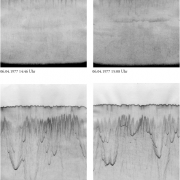 Elemente der Naturwissenschaft77,2002ELEMENTE DER NATURWISSENSCHAFT 77 2/2002 Steigbilder mit Metallsalzlösungen nach Lili Kolisko Ein Erfahrungsbericht mit Untersuchung der experimentellen Bedingungen Václav Záveský Summary... read more
Elemente der Naturwissenschaft77,2002ELEMENTE DER NATURWISSENSCHAFT 77 2/2002 Steigbilder mit Metallsalzlösungen nach Lili Kolisko Ein Erfahrungsbericht mit Untersuchung der experimentellen Bedingungen Václav Záveský Summary... read more -
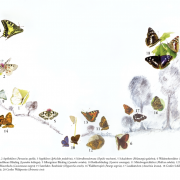 Elemente der Naturwissenschaft77,2002Abb. 1: 1 Baumweißling (Aporia crataegi), 2 Apollofalter (Parnassius apollo), 3 Segelfalter (Iphiclides podalirius), 4 Schwalbenschwanz (Papilio machaon), 5 Schachbrett (Melanargia galathea), 6 Waldmohrenfalter (Erebia ligea), 7 Kleiner nördlicher Würfelfalter (Pyrgus malvae), 8 Himmelblauer Bläuling (Lysandra bellargus), 9 Silbergrüner... read more
Elemente der Naturwissenschaft77,2002Abb. 1: 1 Baumweißling (Aporia crataegi), 2 Apollofalter (Parnassius apollo), 3 Segelfalter (Iphiclides podalirius), 4 Schwalbenschwanz (Papilio machaon), 5 Schachbrett (Melanargia galathea), 6 Waldmohrenfalter (Erebia ligea), 7 Kleiner nördlicher Würfelfalter (Pyrgus malvae), 8 Himmelblauer Bläuling (Lysandra bellargus), 9 Silbergrüner... read more -
 Elemente der Naturwissenschaft77,2002ELEMENTE DER NATURWISSENSCHAFT 77 2/2002 Verstehen verstehen Peter Buck Summary In vol. 73 of this journal Johannes Kühl (2000), with reference to Rudolf Steiner’s so-called Bologna... read more
Elemente der Naturwissenschaft77,2002ELEMENTE DER NATURWISSENSCHAFT 77 2/2002 Verstehen verstehen Peter Buck Summary In vol. 73 of this journal Johannes Kühl (2000), with reference to Rudolf Steiner’s so-called Bologna... read more -
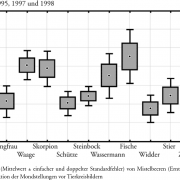 Elemente der Naturwissenschaft77,2002ELEMENTE DER NATURWISSENSCHAFT 77 2/2002 Formveränderungen reifender Mistelbeeren Heidi Flückiger und Stephan Baumgartner Summary Path curves are fundamental constructions of projective geometry. They might also serve as... read more
Elemente der Naturwissenschaft77,2002ELEMENTE DER NATURWISSENSCHAFT 77 2/2002 Formveränderungen reifender Mistelbeeren Heidi Flückiger und Stephan Baumgartner Summary Path curves are fundamental constructions of projective geometry. They might also serve as... read more -
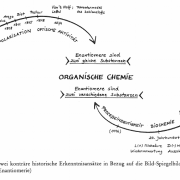 Elemente der Naturwissenschaft2002,2002Optische Aktivität von Kohlenstoffverbindungen Handeln und Erkennen im Wechsel Albert Pröbstl Summary In the polarity of action and perception in chemistry the emphasis seems to be on action. Several stages in the development of the concepts of ‘Optical Activity’ and ‘Chirality’ since the 17th century show that physical experiments (... read more
Elemente der Naturwissenschaft2002,2002Optische Aktivität von Kohlenstoffverbindungen Handeln und Erkennen im Wechsel Albert Pröbstl Summary In the polarity of action and perception in chemistry the emphasis seems to be on action. Several stages in the development of the concepts of ‘Optical Activity’ and ‘Chirality’ since the 17th century show that physical experiments (... read more -
Elemente der Naturwissenschaft2002,2002Arbeitsgruppen Pigmente für die Malerei - Phänomenologische Materiekunde Theodor Bolsinger, Chemiker, ehemals Ciba Basel Mit käuflichen, fixfertigen Malfarben zu arbeiten ist heute so zur Selbstverständlichkeit geworden, dass die Benutzer meistens Mühe haben, sich den enormen Aufwand vorzustellen, der einst z.B. im Atelier eines jan von Eyck... read more
-
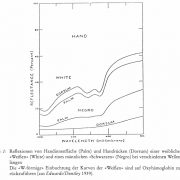 Elemente der Naturwissenschaft2002,2002Biochemie und Physiologie der Farbstoffe der menschlichen Haut Klaus-Peter Endres Summary The variation in colour of the human skin is mediated by the coloured substances melanin and haemoglobin, and to a lesser degree by carotene. Spectrophotometric analysis reveals that the distribution of these three pigments within the human organism... read more
Elemente der Naturwissenschaft2002,2002Biochemie und Physiologie der Farbstoffe der menschlichen Haut Klaus-Peter Endres Summary The variation in colour of the human skin is mediated by the coloured substances melanin and haemoglobin, and to a lesser degree by carotene. Spectrophotometric analysis reveals that the distribution of these three pigments within the human organism... read more -
Elemente der Naturwissenschaft2002,2002Cholesterin und Glyceridfette Eine Polarität innerhalb der Lipidsubstanzen Martin Errenst Summary This paper is about the relationship of cholesterol to human physiology. Cholesterol is synthesised by the human body. On the other hand, triglyceride fats are required in our diet because our body cannot synthesise essential fatty acids.... read more